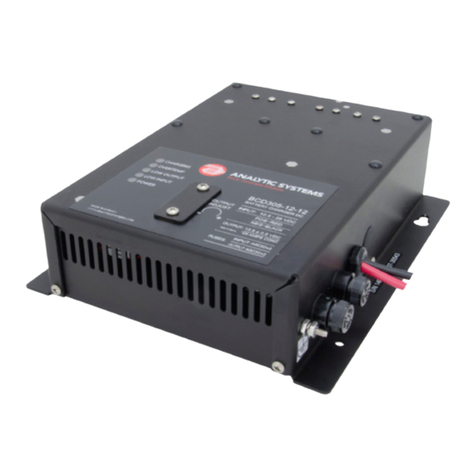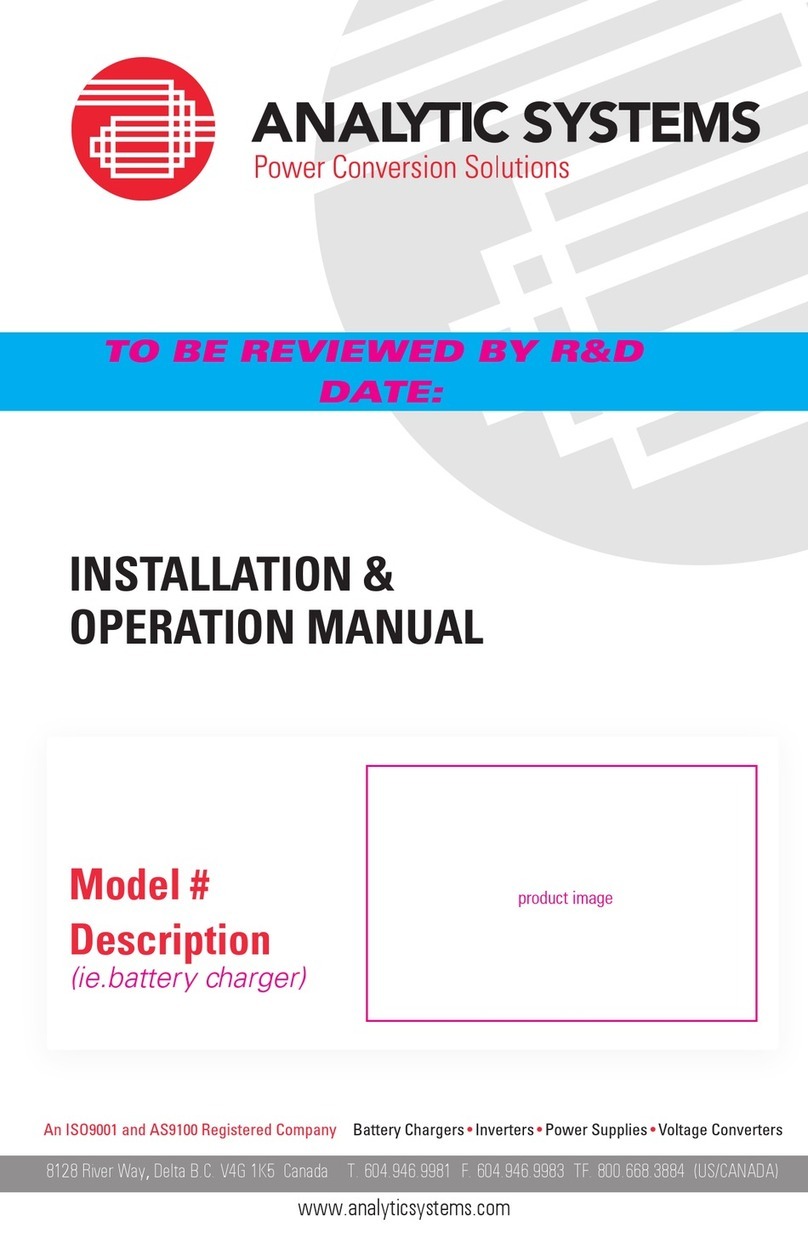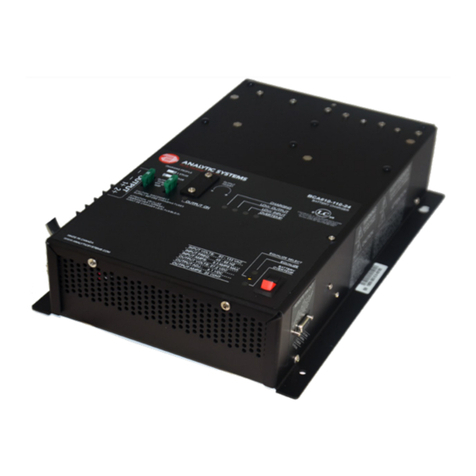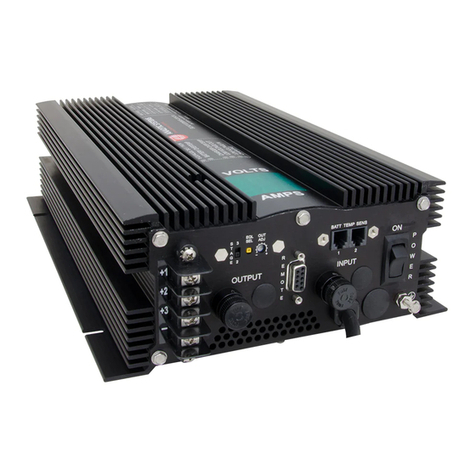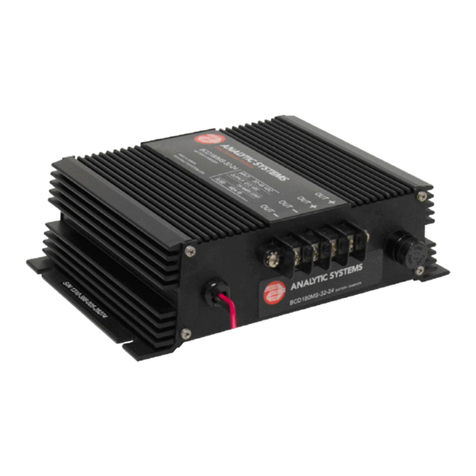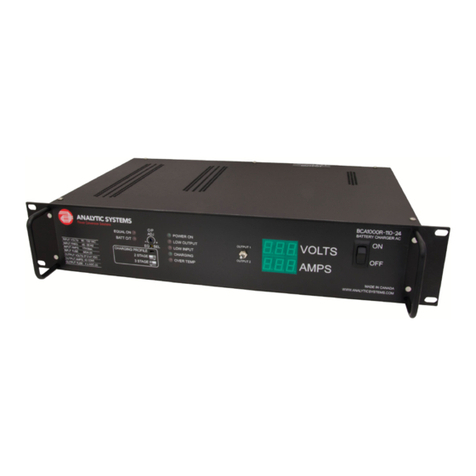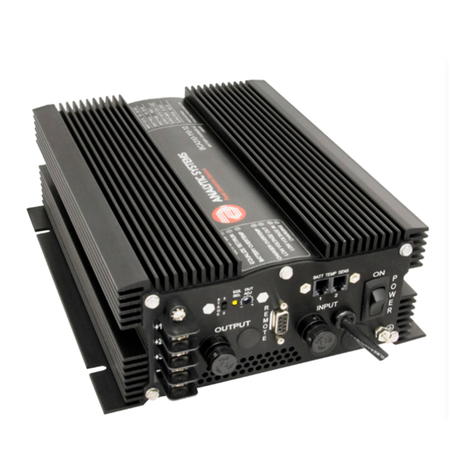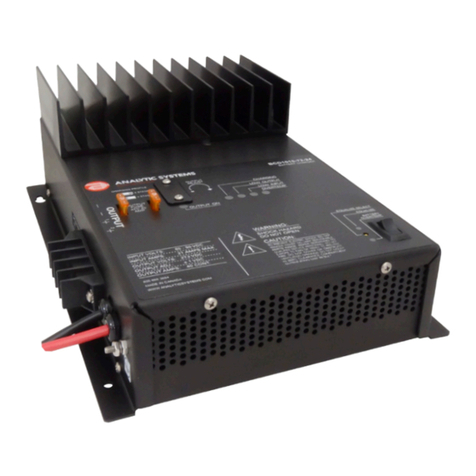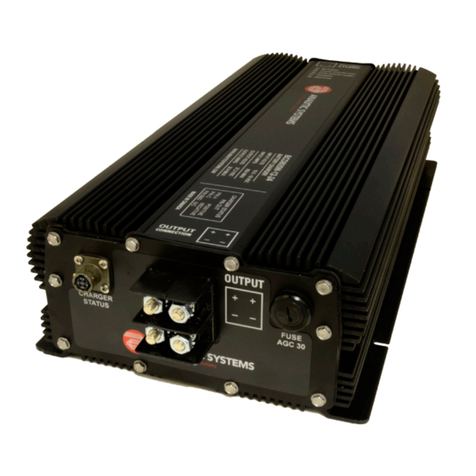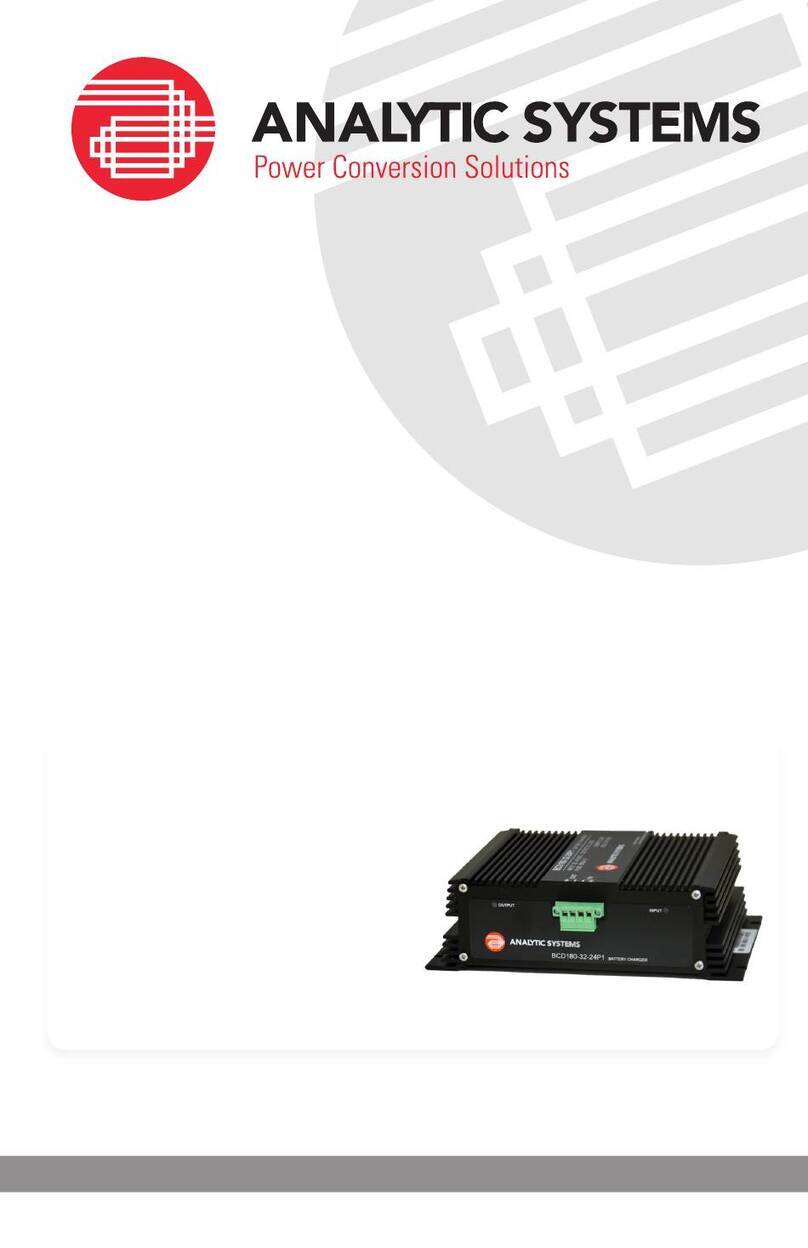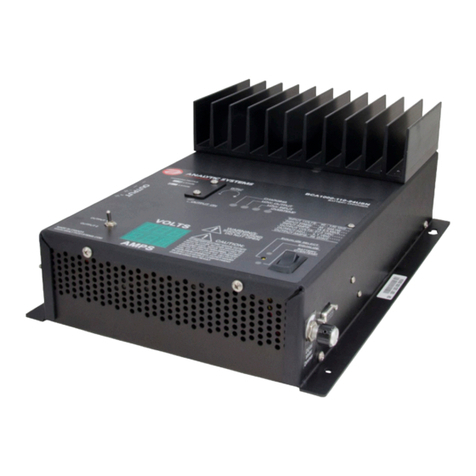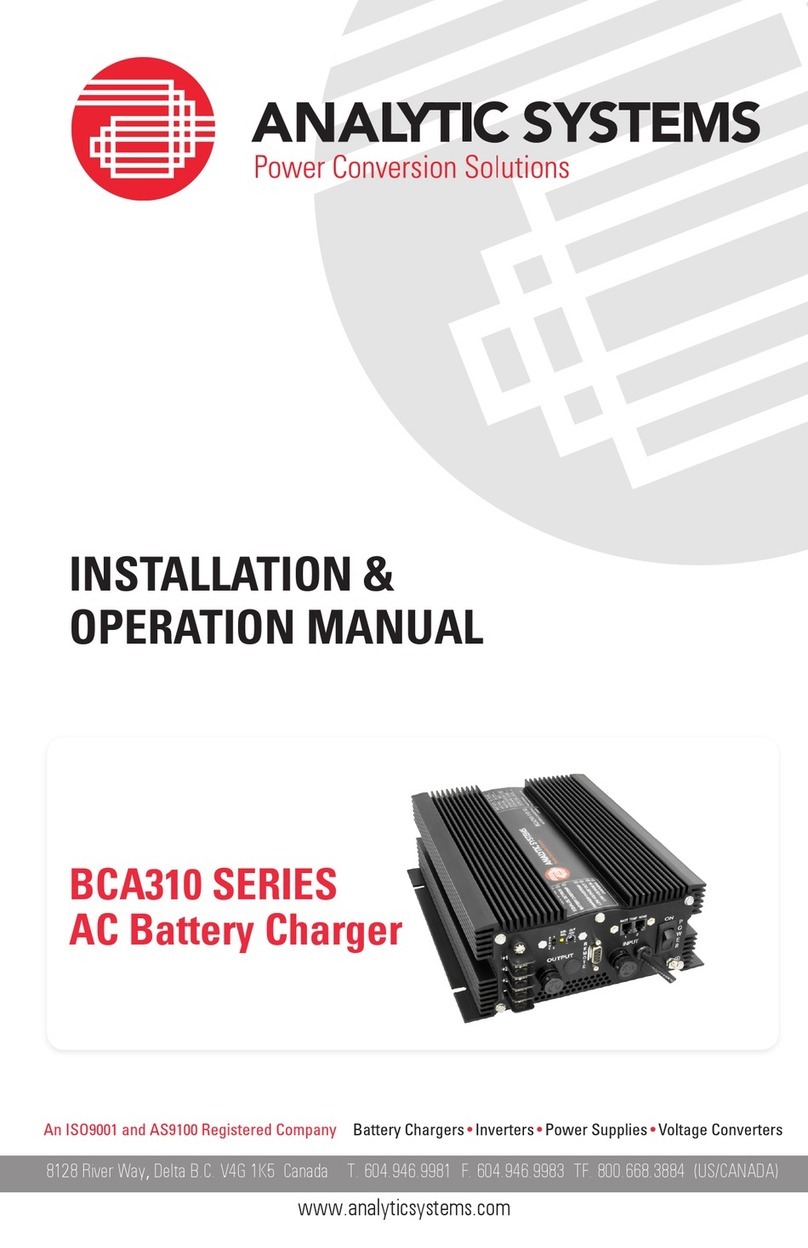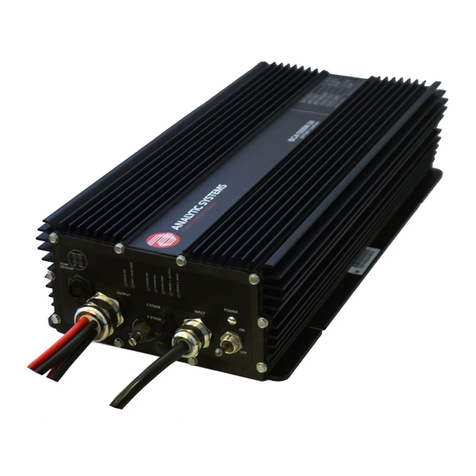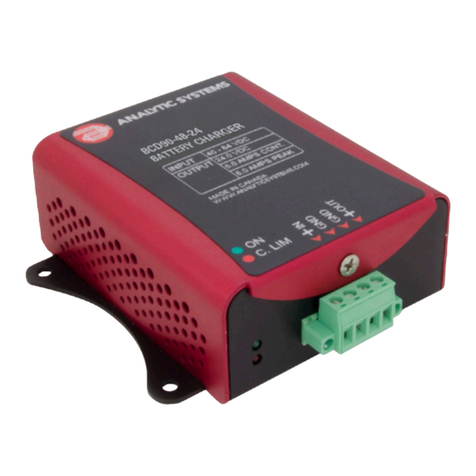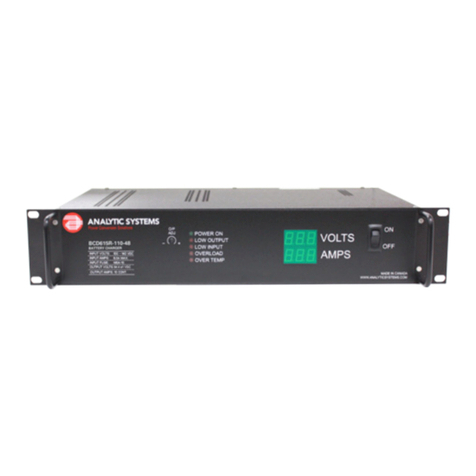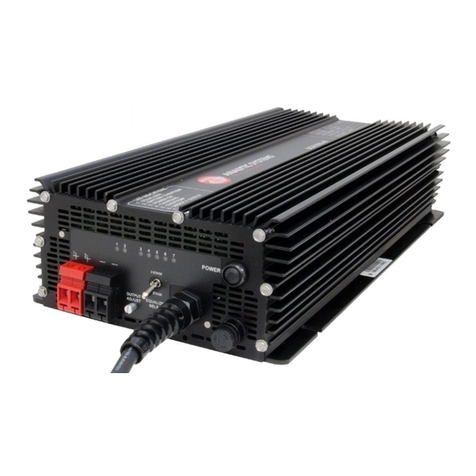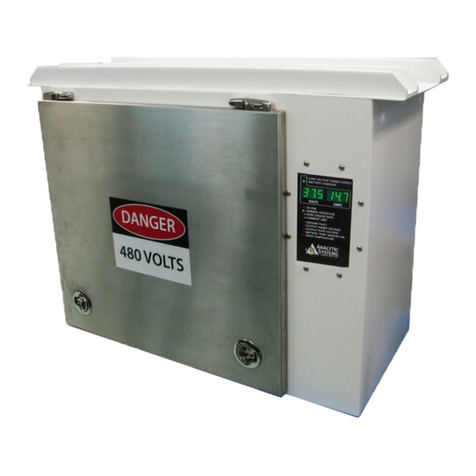
IMPORTANT SAFETY INSTRUCTIONS
SAVE THESE INSTRUCTIONS — This manual contains important safety and
operating instructions for the converter.
1. CAUTION — To reduce risk of injury, charge only 1.2 V or 2.4V Nickel
Cadmium rechargeable batteries. Other types of batteries may burst
causing personal injury and damage.
2. Do not expose the charger to rain or snow.
3. Do not disassemble converter; take it to a qualified serviceman when
service or repair is required. Incorrect reassembly may result in a risk of
electric shock or fire.
4. To reduce risk of electric shock, disconnect the charger from both the solar
panel and the batteries before attempting any maintenance or cleaning.
INTRODUCTION
Charge a 1.2 or 2.4 volt Ni-Cad battery from a 6 or 12 VDC Solar Panel. The largest
solar panel that can be used must have an output current of 10.0 amps or less at
4.0V (to ensure compatibility with the backup shunt regulator). Features include a
high efficiency 200 KHz switching regulator with cycle by cycle current limiting, 600V
output isolation, and backup shunt regulation. The design is optimized for reliable
operation in high-vibration environments. A wide operating temperature range of –40
to +60 degrees C permits use in harsh environments. At low light levels the unit
operates in a discontinuous mode. When the solar panel operates at low light levels
with a load, its output voltage falls below the usable input of the unit. The unit turns
itself off under this condition. The solar panel then charges the input capacitors to a
usable level and the unit turns on. When the capacitors discharge the unit turns off
until the capacitors recharge. This cycle continues until a constant 6 or 12 volts is
available from the solar panel. This allows the unit to charge the batteries under all
light levels. The charger is factory preset for operation with a 6V Solar Panel and a
1.2V Battery. To convert the charger for a 12V Solar Panel and/or a 2.4V battery
simply follow the instructions on the inside of the unit. If the switching transistor fails
short, the unit goes into shunt regulation and the output voltage is clamped to 1.75 or
3.50 +/- 0.05 volts. SPECIFICATIONS
Switching Regulator
Input Volts 5-10 or 10-20 VDC (field selectable)
Input Surge Suppression 22 VDC nominal 1500 Watts
30 VDC Max @ 49 Amps for 1 milli-second
Output Volts 1.5 ±0.075 or 3.0 ±0.15 VDC (field selectable)
Output Amps 15 (1.5V) or 7.5 (3.0V) Continuous
Current Limit 15.5 (1.5V) or 7.55 (3.0V) Amps
Short Circuit Amps < 20 (1.5V) or < 10 (3.0V)
Output Isolation 30A, 600V Series Diode
Output Surge Suppression 18 VDC nominal (bipolar) 1500 Watts
25 VDC Max @ 59 Amps for 1 milli-second
Case Isolation 2000 VDC
Shunt Regulator
Clamp Voltage 1.75 or 3.5 +/- 0.05 VDC
Max Current 10.0 Amps
Max Dissipation 40 Watts
Environmental
Operating Temp Range -40 to +60 deg. C
Storage Temp. Range -65 to +150 deg. C
Humidity 0 to 95% non condensing (conformal dipped)
Mechanical
Size: 7.9 x 3.5 x 2.4 in. / 20.1 x 10.2 x 6.1 cm
Clearance 1 Inch (2.5 cm) all around
Material Marine Grade Aluminum
Finish Black Anodize / Powder Epoxy
Fastenings 18-8 Stainless
Weight 1.7 lb / 0.8 kg
INSTALLATION
SETUP
The charger is preset for operation with a 6V Solar Panel, and for 1.2V Batteries. If
the unit is to be used with a 12V Solar Panel and/or with 2.4V Batteries, it must be
opened. Remove the 2 screws from the bottom plate, shift it sideways slightly, and
then remove it. The unit has no potentiometers to reduce the chance of being
affected by vibration, so the technique used is to cut out the appropriate components
using a pair of small wire-cutting pliers. Refer to the diagram on the inside of the
bottom plate for directions on which components to remove.
MOUNTING
Mount the unit in a DRY location.
CONNECTIONS
The unit is equipped with a terminal strip for easy connection. Markings on the unit
indicate the proper wire connections. Connect in the order listed below:
1. + BATT OUT Battery (+) Positive
2. - BATT OUT Battery (-) Negative
3. -SOLAR IN Solar (-) Negative
4. + SOLAR IN Solar (+) Positive
OPERATION
The unit will operate whenever the solar panel is connected and sufficient light is
available.
PROBLEM SOLVING
If there is no output, check that there is sufficient light falling on the solar panel and
that all connections are properly made.
Designed and manufactured by:
ANALYTIC SYSTEMS
#207 12448 82 Ave. Surrey, B.C., V3W 3E9, Canada
Caution
Make sure you remove the correct components, as it is not possible to
reverse your actions. Once removed, the component cannot be replaced.
WARNING!
Ensure correct battery
polarity hookup or the

